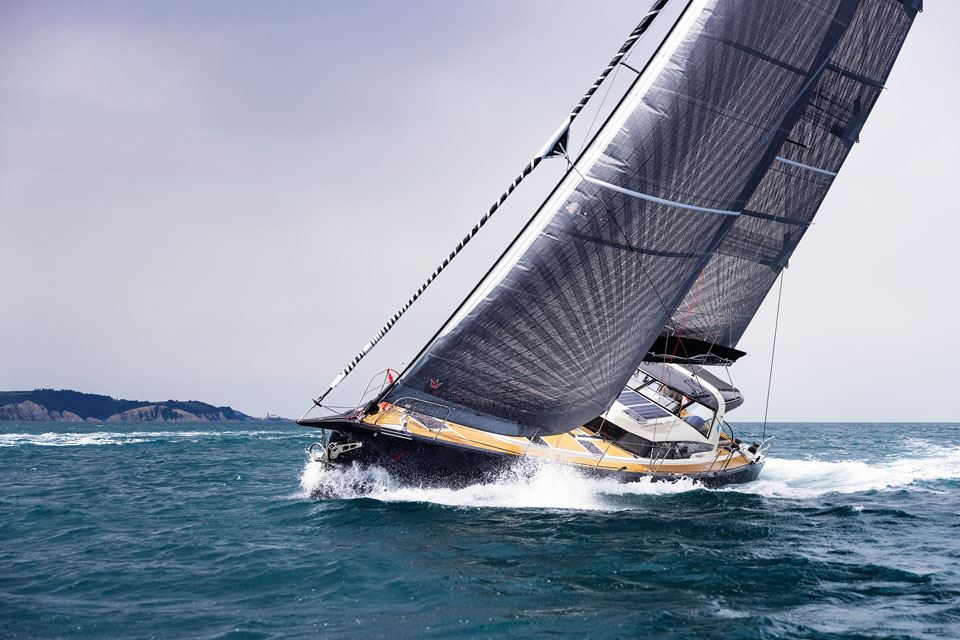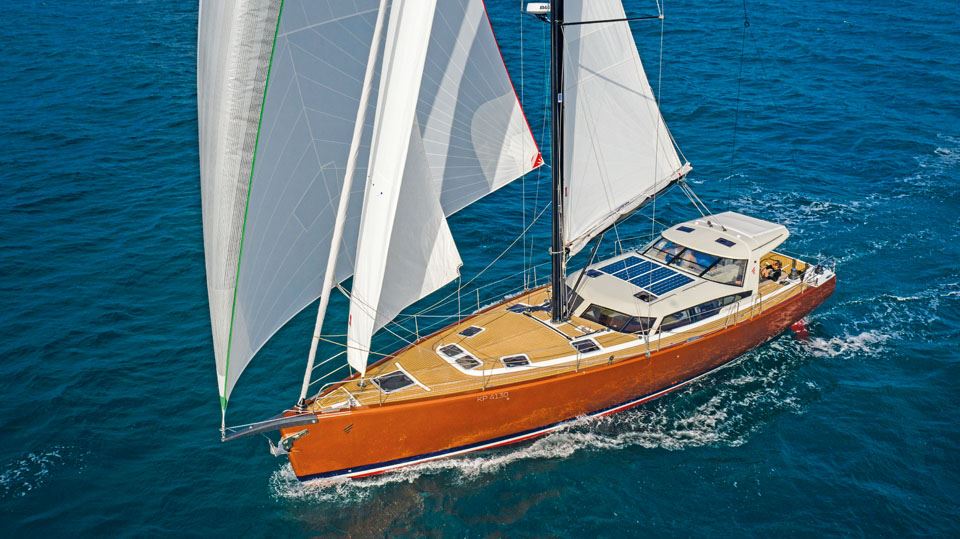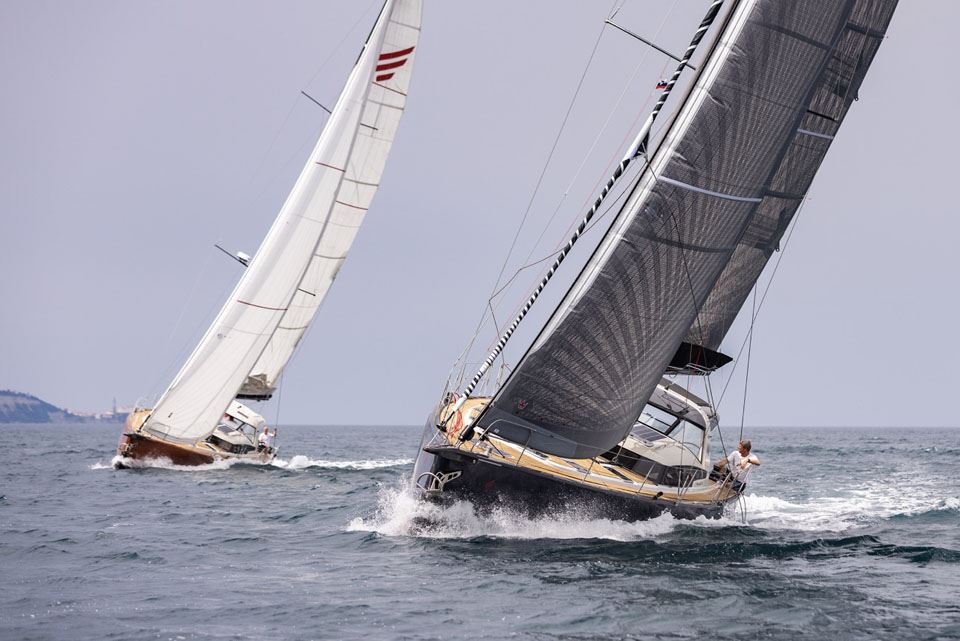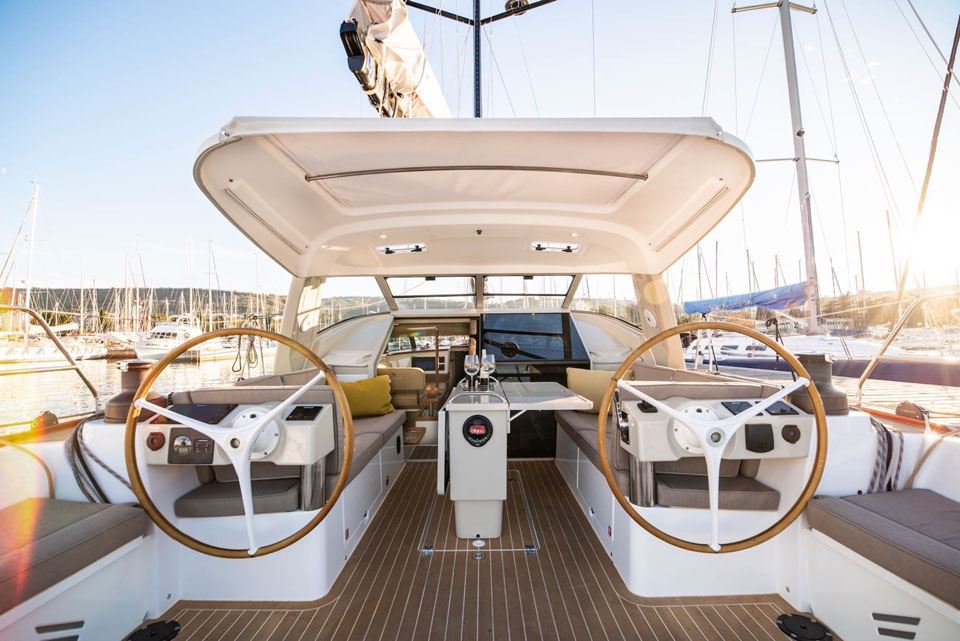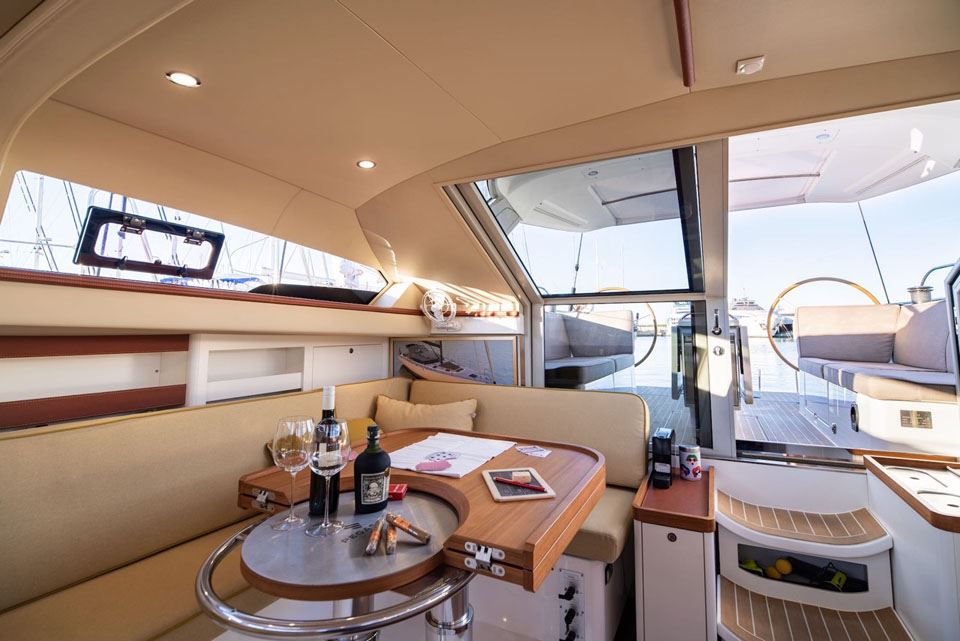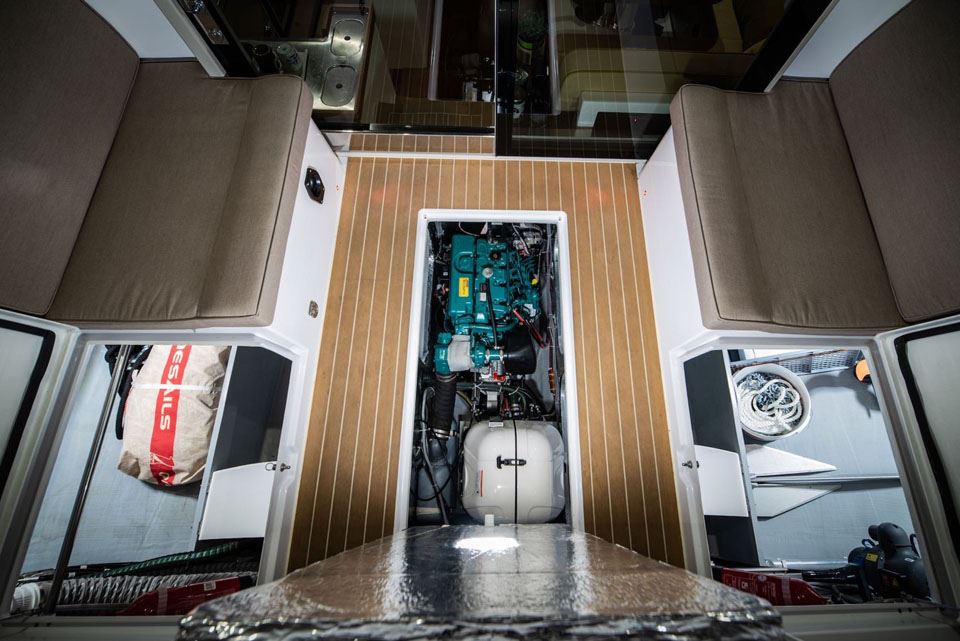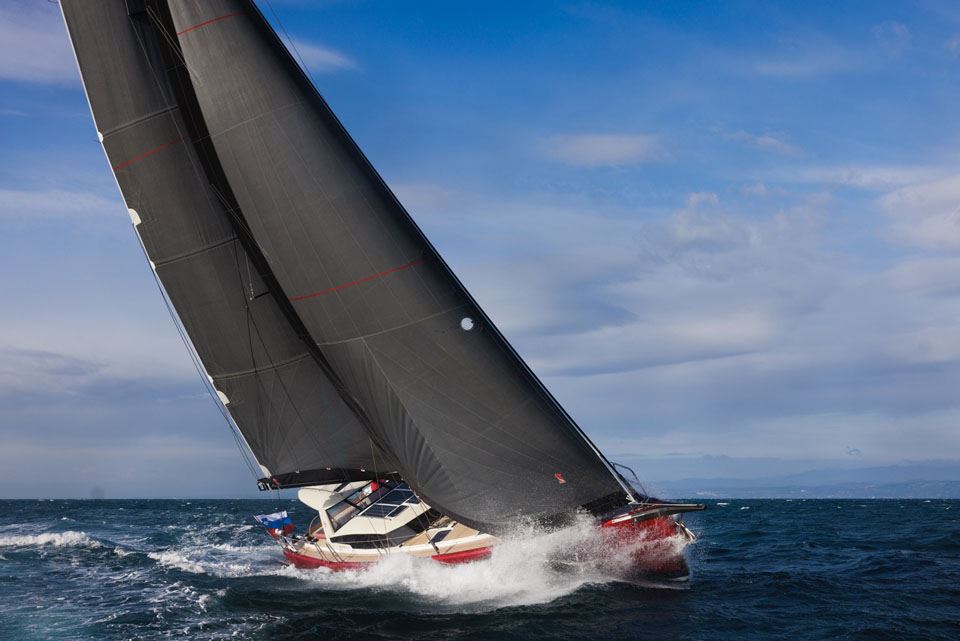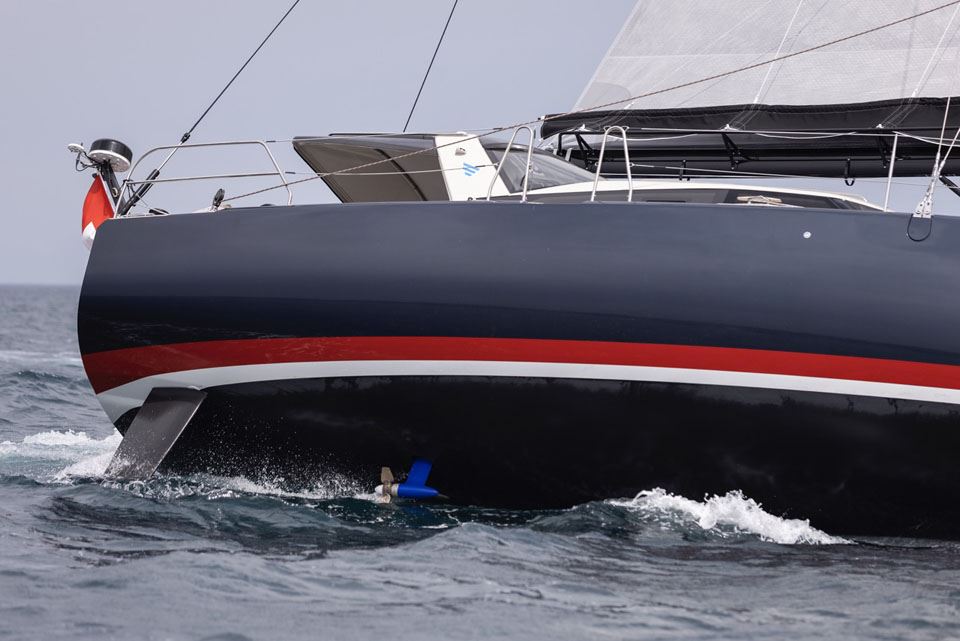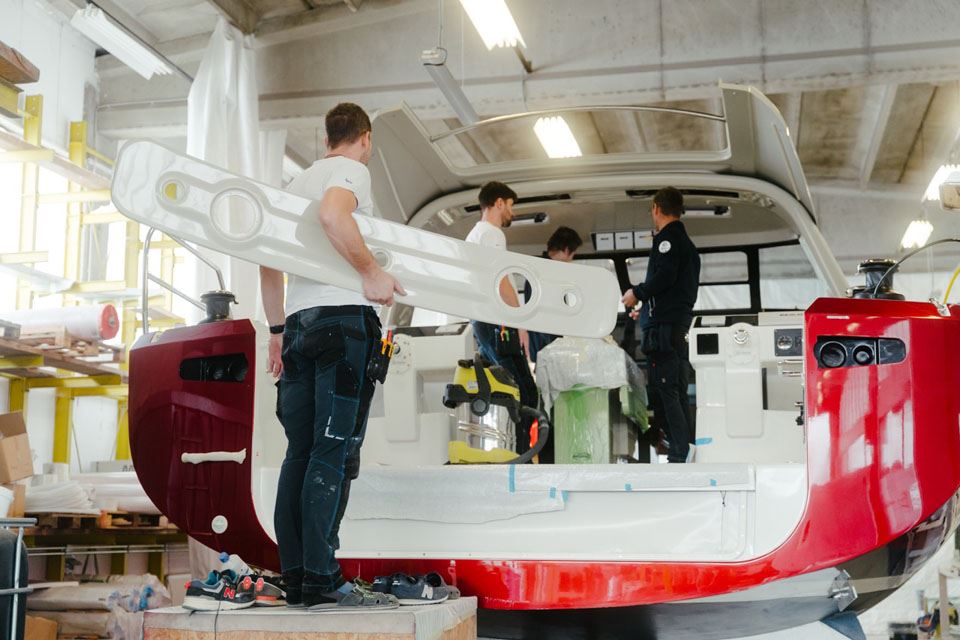Your Local Broker, Internationally
Berthon UK
(Lymington, Hampshire - UK)
Sue Grant
sue.grant@berthon.co.uk
0044 (0)1590 679 222
Berthon Scandinavia
(Henån, Sweden)
Magnus Kullberg
magnus.kullberg@berthonscandinavia.se
0046 304 694 000
Berthon Spain
(Palma de Mallorca, Spain)
Simon Turner
simon.turner@berthoninternational.com
0034 639 701 234
Berthon USA
(Rhode Island, USA)
Jennifer Stewart
jennifer.stewart@berthonusa.com
001 401 846 8404
Bluewater Cruisers – The Future Is Now
By Marko Paš of Marine Designs (founder & director of Pegasus Yachts)
Dear reader, please keep in your mind that my experience and my thoughts in this article focus exclusively on mid-sized cruising yachts from 15 to 25 metres, being built in composite materials.
MATERIALS AND PRODUCTION TECHNOLOGY
Materials and production technology developments through the past two decades have been able to exploit the benefits of lightweight build in the cruising yacht segment. The fibre wetting and laminate consolidation process called vacuum infusion has now been mastered by designers and builders, providing the major composite production method. Vacuum infusion is safe, financially affordable and delivers a good quality, sustainable yacht structure. The availability of carbon materials at an affordable price for some yacht groups, and extensive experience of structural engineers enabling them to use a combination of glass fibres with carbon, has resulted in the possibility of lighter yacht structures. Yachts nowadays are lighter in construction, without losing soundness, durability, or longevity.
Modern lightweight hulls like our Pegasus 50’, have a higher sail area to displacement ratio and fuller bow sections, hence, speeds increase, especially reaching and downwind. Fuller bows do not steer the yacht, as the bow always remains high out of water, which in turn means that the deck stays dry. By reducing total displacement, the necessary driving force can be reduced, which means that the mast can be shorter, lighter, and less expensive. It also reduces the sail area needed. An absolute winner for my taste is the use of carbon masts, which have become much more widely used during the last decade. It is not unusual today for a modern bluewater yacht to find herself with a 30% lighter mast than the alloy equivalent. This also means that the motion in a seaway is softer and easier.
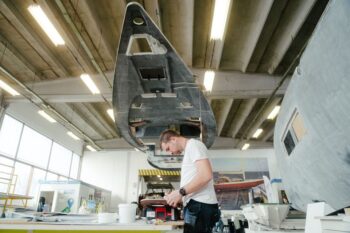
However, reducing displacement and improving reaching and downwind speed is not always favourable. There will still be traditional ocean-going yachts designed and built with intentionally higher displacement for more comfort and, in some cases, for more speed. Imagine motoring into a choppy sea – here a heavy displacement hull with fine bow entry and its high mass inertia, softly cuts through the water. In contrast, a lightweight hull with fuller bow is a total nightmare in these conditions. Very uncomfortable. These two worlds will split in future, but lighter displacement bluewater cruising yachts are coming. We just need to find the right balance between the various elements; comfort, speed, and cost.
NEW DEVELOPMENTS FROM THE RACING WORLD
Many people question how racing boats, especially with the developments in foiling aboard America’s Cup boats and ocean racing classes, will contribute to the cruising yacht segment. I honestly don’t know. I am certain that there are already a good number of small features that we do not directly recognize that are already improving our passage times when crossing oceans. Electronics, especially autopilots, are getting better, composite standing rigging which reduces weight high above the centre of buoyancy has improved as much as fourfold, there are high-performance ropes for acceptable budgets, laminated durable lightweight sails…
Are we, cruising folks, flying above the waves on the ocean? Probably not, because if you fly on water and waves, the yacht also lands in the water and that is dangerous. As a famous British sailor said recently: “it’s not the speed, it’s the abrupt stop, that kills”.
Or maybe it will simply take more time to develop racing systems for cruising. But still, we can’t control nature and yachts are moving through the air and in the water at the same time. Cruising, at speed is only one part of the joy. There is much more to it preparing food, good sleep, no stress, a love of the sea…
I believe cruising motor yachts have much more to gain from foiling knowledge. Foil supported power catamarans are no longer exotic and they are very functional at sea. I was lucky to be involved with a project development in this segment, and foils provide a fast and smooth ride, which is comfortable because vertical acceleration is much reduced and fuel consumption is also notably diminished. Another bonus is that the catamaran’s crew get less seasick!
CATAMARANS OR MONOHULL?
Even though I sailed an Olympic campaign in Tornado catamarans and hugely enjoyed their performance and speed, I am focused today on sailing and developing monohulls. This may appear a little anachronistic on my part, particularly as there is a constant drive for new and progressive developments for cruising sailing catamarans. This development began over 20 years ago when multihull builders started building cats for cruising areas like the Caribbean and Far East. They deliver roomy saloons with 360 degree vision that are fully connected with the cockpit as well as providing four quasi-equal cabins. They are the perfect platform for sea lovers. Plenty of mooring spaces and constant ocean breezes with reaching courses fuelled demand for these boats, and over time production sailing catamarans evolved into comfortable houseboats. A wise move for builders and their happy catamaran clients. This in turn, has opened up the market for a new breed of catamarans / performance catamarans.
These boats are technical marvels. They sail upwind and are super-fast when reaching because they are lightweight and they have massive stability that generates drive. These boats are easier to handle because of the use of fully furling downwind sails. However, their complexity, very high speed potential and high loads are challenging for cruising sailors. Of course, the price point is also eye watering, correctly reflecting the level of technology and performance delivered.
For my very personal taste, monohulls are still best on the grounds of practicality and safety amongst many other reasons, but I predict that catamarans as a generality are going to take a major portion of the market in time.
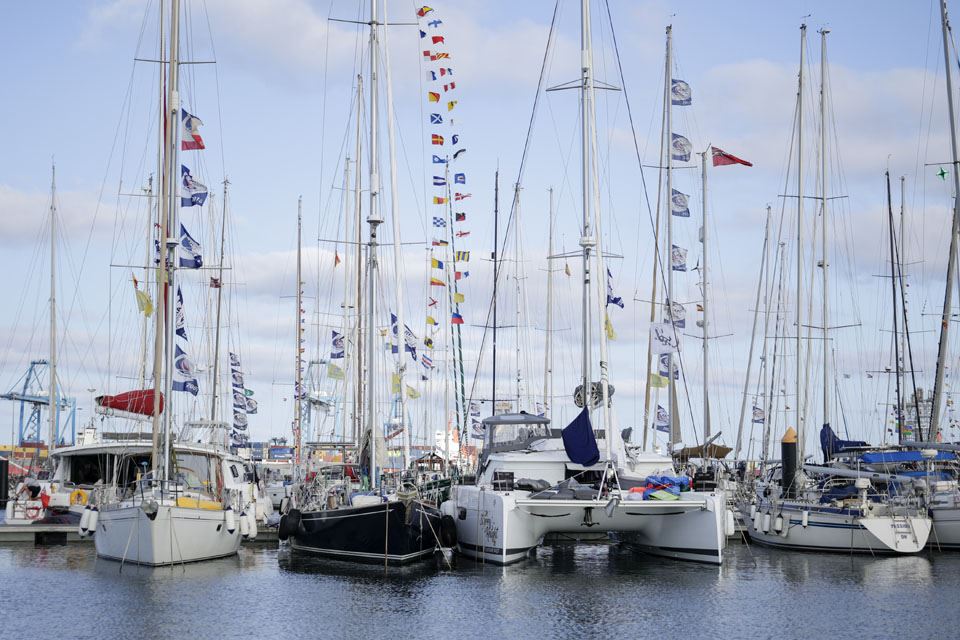
Will catamarans take over? I have no idea; this will be determined by existing and future infrastructure. However, when choosing between a production cruising monohull or a catamaran, my personal choice for bluewater would definitely be monohull.
EXTERIOR STYLING-INTEGRATED COCKPIT COVERINGS
When thinking about styling and the exterior aesthetics of bluewater cruising yachts, I feel that inevitably the emphasis will focus on practicality. The need for sun protection and the fact today’s sailors tend to be less agile and want comfort will push designers and builders towards protected cockpits. Even the most traditional brands are implementing mainsheet arches and from there it’s just a small step to an integrated solid cockpit roof.
Remember the Renault Espace back in mid-80s? Even a conservative industry such as ours will adapt. Sailors are simply not willing to hide from the sun in a tiny part of the cockpit, or to have to deal with complicated canvas sunshade contraptions after dropping anchor. They want to swim and have cool drinks. For the same reason, coachroof windows will become vertical or even inverse. No sleek windshield angles like on a sports car. This is not only a fashion trick taken from motorboat designs, it’s also very practical and the result is simply less heat in the saloon.
Boats will generally grow in volume. Every new design is bigger than its predecessor. But this trend is less evident with real ocean-going yachts. The law of physics are not changing, so correct volume distribution per length is still very important for comfort and performance at sea.
Will bow stem shapes remain vertical, or even reverse, as is the trend now? For ocean going yachts probably not- it lifts water which means lots of water on the foredeck and then into the cockpit. But it does look attractive in marinas and at boat shows.
ECO SUSTAINABILITY AND ELECTRIC DRIVE ON BLUEWATER CRUISING YACHTS
We are living in the electric car era, and this technology is flowing into yachting as well. Boat owners, some driving electric cars, expect us builders to translate automotive solutions into boats. But… the devil is in the detail. There are electric drive components on the market, but few suppliers offering a complete package and only few offering a turnkey solution similar to what is on offer for combustion engines. Install, connect, run. No way.
I have been dealing with electric drive on boats since 2008. In the last two years, we have built three bluewater sailing yachts with two different and renowned electric drive package suppliers. Not plug and play! Same for both. We needed to engage our electrical engineering team to produce installation drawings at the level we needed, both in the shipyard and for our owners. Days of email exchanges and video conference calls followed with highly sophisticated electronic language no one fully understood. And after the commissioning papers are signed by the system supplier’s most senior person, the yacht owner moved the throttle forward and the yacht went into reverse, or the owner discovers that not all the battery cells are balanced to the same hundredth of a volt. Of course, it’s always the yacht builder’s fault, despite the fact that the supplier has signed off the system as fully commissioned!
So, a bit of the boat builder’s insight, not to say frustration, before I move onto the subject of electric drive.
In general terms, transfer of torque on a displacement sailing boat, from propeller to water is ten times less efficient than a car tyre to the road. This is simply physics. So, the comparison with cars fails immediately and this has proved to be the case in practice too. Thinking about how we all use our yachts, there are three categories –
| 01 DAY SAILING
Out of the marina to an anchorage not far from the start or sailing and returning back to marina in the evening.
|
CASE 1 DAY SAILING
Electric propulsion for people motoring their yachts in and out of marinas with an electric infrastructure for regular charging of the battery bank works fine. On a lightweight 50-footer, a 38kW battery bank provides range of 25 miles at 5.5 knots.
|
| 02 HOLIDAY HOPPING
Holiday time is limited and so the cruising programme takes in as many destinations as possible. Add to this the need to meet up with friends to show them your new yacht! This programme does not take wind strength or direction into account. This is how a typical Mediterranean cruise normally works.
|
CASE 2 HOLIDAY HOPPING
If you have a tight programme and need to motor, because there is no wind or it is coming from the wrong direction, you need power to cover distances otherwise you will have to anchor in a protected anchorage until wind conditions change. In this case, an effective set up is critical. You can always run the generator to power the electric motors. But what is the gain if you need to run the generator with diesel to run electric motors? All our electric yachts have the same amount of diesel on board as our diesel powered yachts. The maximum range with the generator running and electric motors is similar. But at 5.5 knots constant boat speed, the time at sea with electric drives is 30% longer, if the sea state is flat, otherwise the difference is even larger.
|
| 03 SAILING OCEANS
Sailing for long periods without undue time pressure and taking advantage of the prevailing winds. |
CASE 3 SAILING OCEANS For peace of mind for the keen sailor, where there is no rush and you are sailing oceans with generally prevailing winds, electric drive is a potential option because of the regeneration that electric drive offers. If you sail a lot, electric drives regenerate up to 1.5kW per hour, which means that the main battery bank is constantly full, and the yacht has an excess of energy. But for long distances a diesel generator is still obligatory as well as a large diesel tank. |
Pleasure marine electric propulsion is currently being adopted by enthusiastic start-up companies and the technology is relatively immature. There have been announcements that larger players in the propulsion sector will enter the electric market with turnkey solutions, but so far, their solutions have been postponed. Probably for good reason. Until these new systems are available, builders, and especially yacht owners will have to survive with the solutions that are currently available on the market. For early adopters and electric enthusiasts this might not be a problem.
LESS IS MORE
If I could have my wish for the future for real bluewater cruisers, Less is More would be the name of the game. Less complexity, more freedom, less unnecessary stuff, less stress. Compare yachts with cars, where even small and inexpensive cars have unbelievable features; from big screens to interactive audio solutions. Think of the amount of resource that the automotive industry spends on one car model! I wish that yacht designers and builders had a fraction of this potential spend. But until this changes, let’s design and build yachts that are fair and simple, and let the yachts serve our clients and not vice versa.


